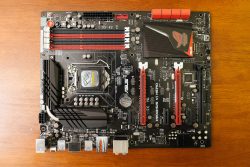 Is it possible to plug a USB device into the motherboard? Yes, it is possible. If you have the right kind of motherboard, it’s ridiculously simple, if not, you can still get it done with some hardware. The advantage of connecting a USB device to your motherboard is that it will hide the device and stay connected without any disturbance. Follow the steps below and you’ll have it done in a flash.
Is it possible to plug a USB device into the motherboard? Yes, it is possible. If you have the right kind of motherboard, it’s ridiculously simple, if not, you can still get it done with some hardware. The advantage of connecting a USB device to your motherboard is that it will hide the device and stay connected without any disturbance. Follow the steps below and you’ll have it done in a flash.
Plugging a USB Device into Your Motherboard
Type of Motherboard: Many people prefer to plug a USB device into the motherboard as it is considered safe and secure. But, it is not easy, and it depends on the type of motherboard you have. You need to check what kind of motherboard your computer has. If you’re lucky, and your system has a server motherboard, then you can plug a USB device into it.
Connecting a USB to a Server Motherboard
Super Micro X10SLH-F is a server side motherboard that supports connecting a USB device. When you open the CPU, you can see that in the lower edge of your server motherboard, there is a port that allows you to plug in a USB 3.0 device. Just like your traditional USB port, you just need to plug a USB device into the port and it will automatically recognize it.
The demand for server configured motherboard is not as high as other types. Therefore, not many manufacturers are making them. If you don’t find a USB port in your motherboard, that means you don’t have a server configured motherboard. However, this doesn’t mean that you still can’t plug a USB device into it. It just takes a bit more work.
Plugging a USB device into a Motherboard without a USB Port
There is a way to plug a USB device into your motherboard even though it does not have a USB port by default. Let’s see how you can do that.
Open your CPU and take a look at your motherboard. Even though there is no USB port available there for you to plug a USB device, you can find USB headers there. There will be 3 USB headers: 2 USB headers for USB 2.0 and 1 USB header for USB 3.0. You can find USB headers in almost all kinds of motherboards. So, your motherboard will definitely have this.
Convert a USB header into a USB port: Now, you need adapter cables and modules to turn these USB headers into USB ports. You don’t have to spend hours on converting adapter cables or modules into functional USB ports, you just need to open it and plug it in. So, to successfully convert a USB header into a USB port 3.0, you will need adapter cables or an adapter that plugs right into the USB adapter and provides you with a vertical USB port. You can also get adapter/adapter cables for USB port 2.0 from any shop that sells computer accessories. You have now successfully configured a USB port that allows you to plug a USB device into your motherboard even though your motherboard by default does not support USB.
Conclusion
To plug a USB device to your motherboard is no more a difficult task if you’re ready to spend some time and money. By doing this, you can have a secure and safe place for your USB device.

 Email article
Email article



